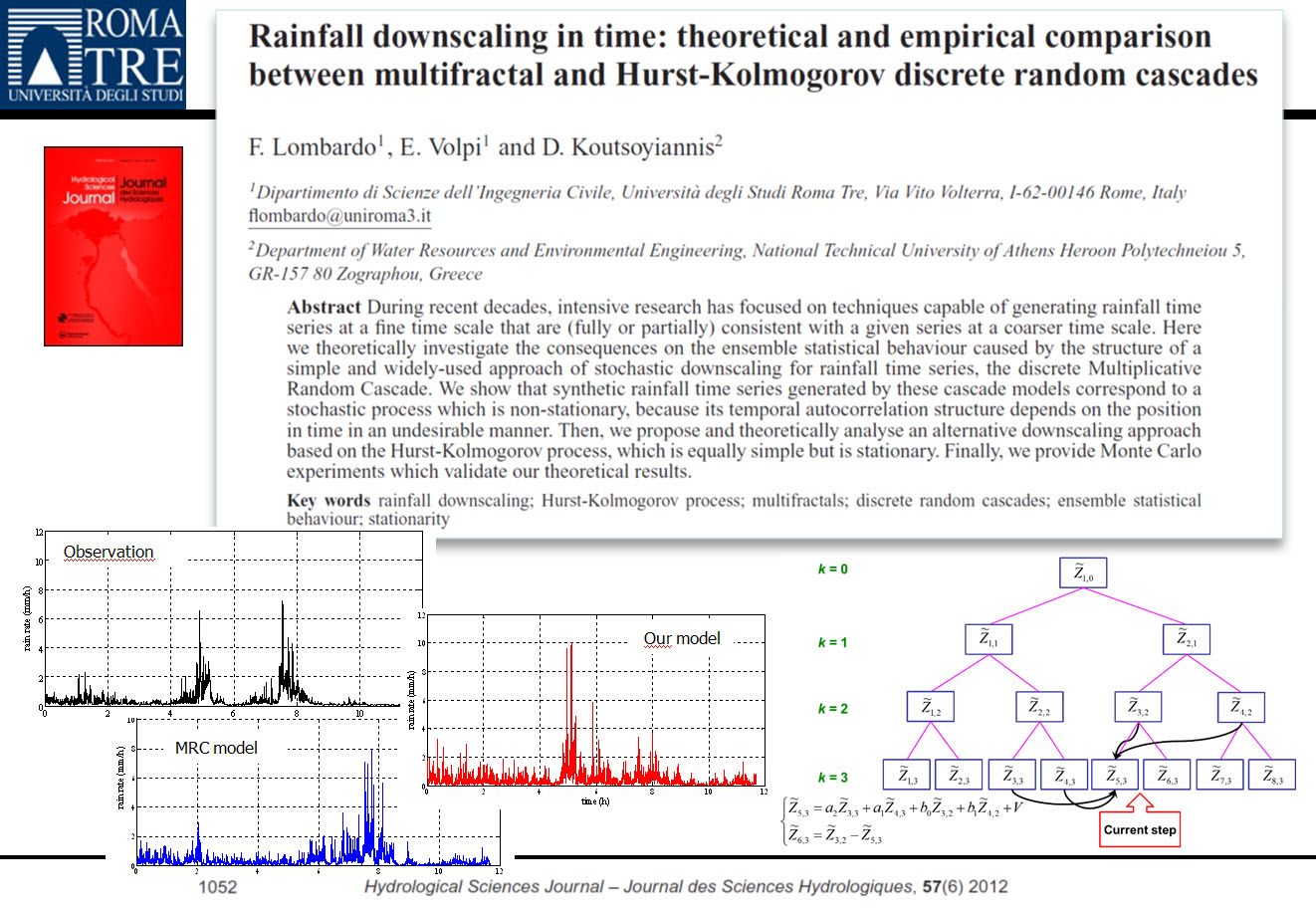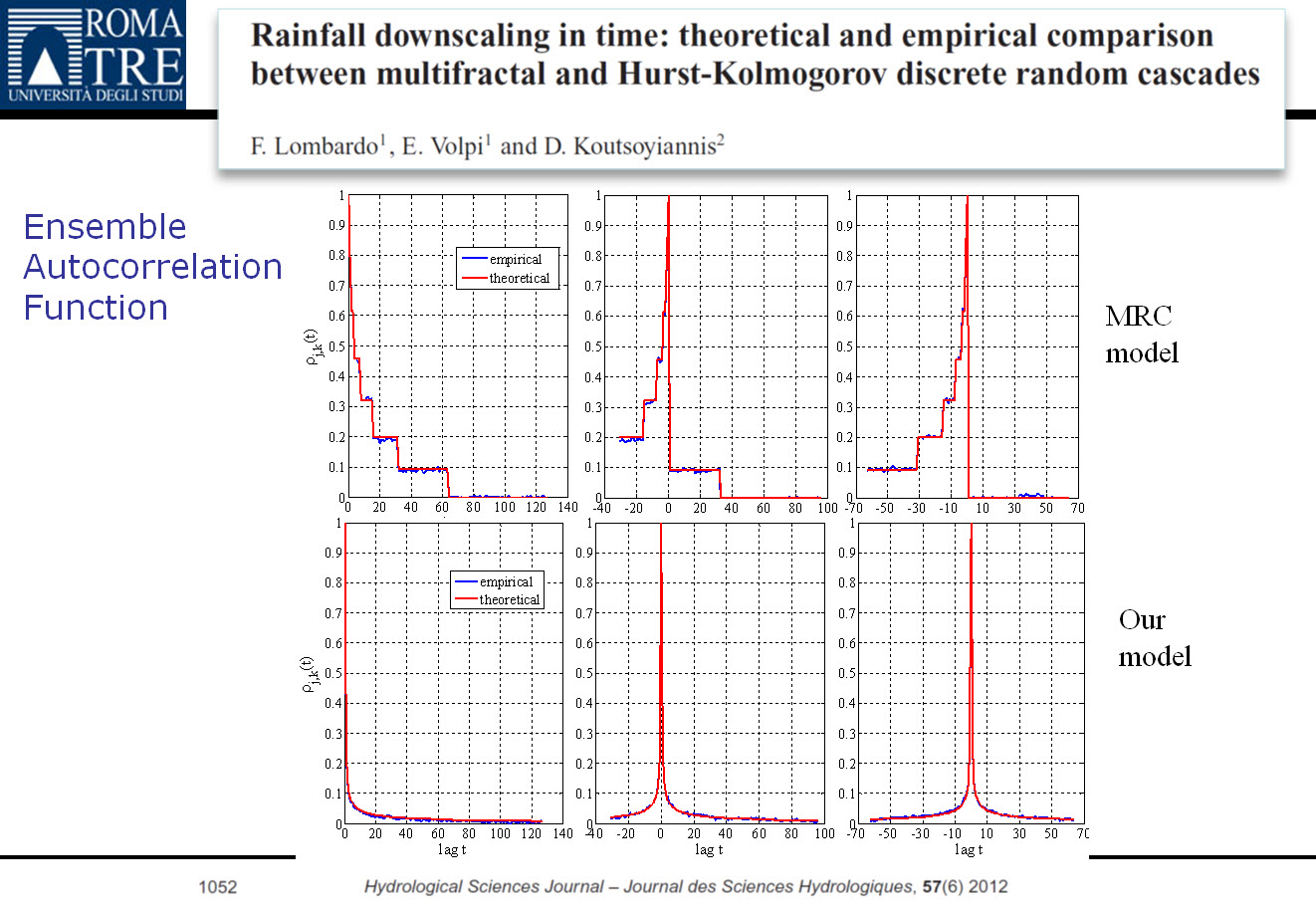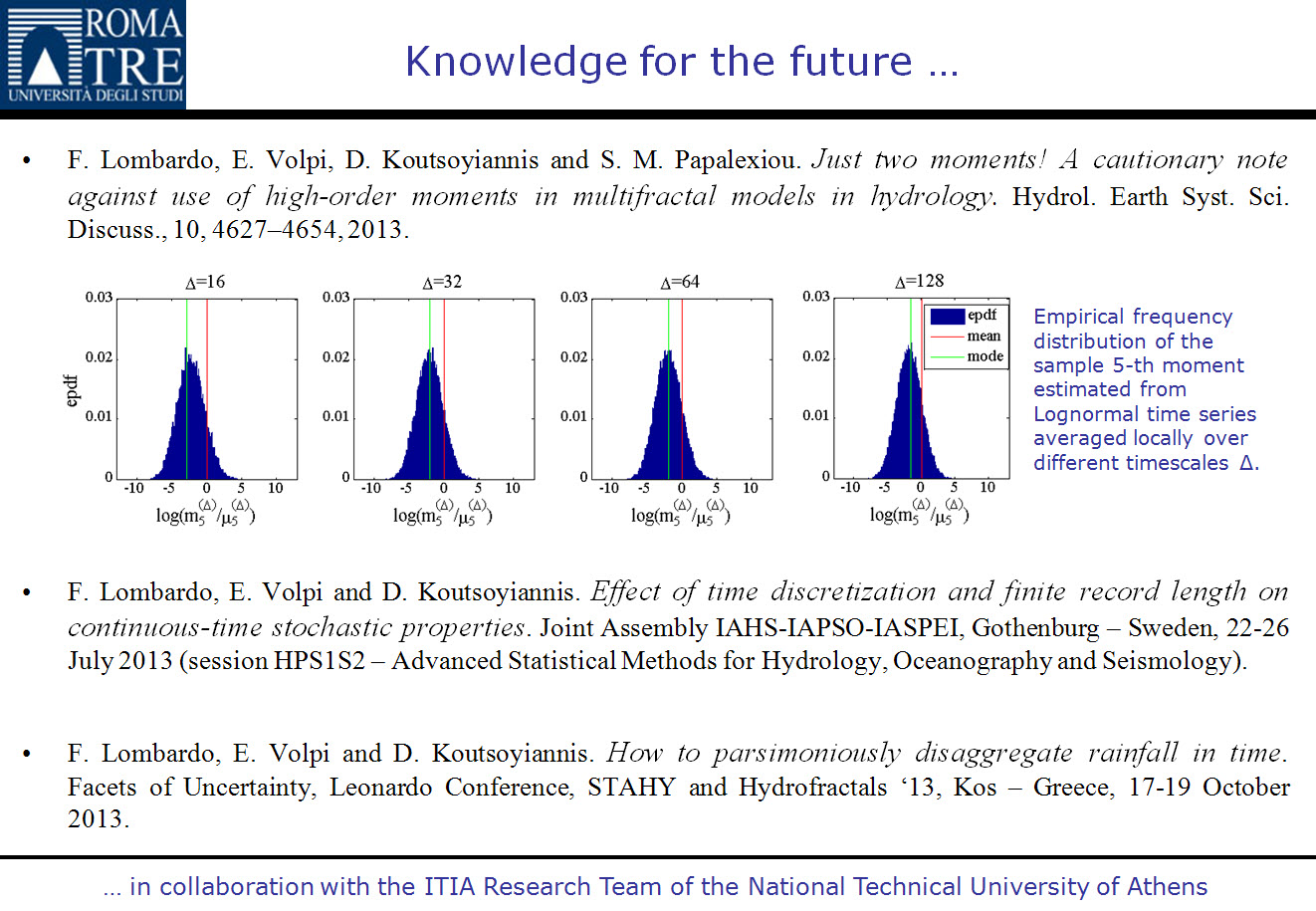TISON AWARD 2013
The 2013 award was presented by Prof. Zbigniew Kundzewicz to Elena Volpi and Federico Lombardo co-authors of the paper:
by F. Lombardo, E. Volpi and D. Koutsoyiannis
published in 2012 in Hydrological Sciences Journal 57(6), 1052–1066.
Citation, by Z.K. Kundzewicz
The Tison Award for the year 2013 goes to young Italian scientists - Federico Lombardo and Elena Volpi of the Civil Engineering Department, University of Roma Tre, for their paper “Rainfall downscaling in time: theoretical and empirical comparison between multifractal and Hurst-Kolmogorov discrete random cascades” published in Hydrological Sciences Journal in 2012. The paper was also co-authored by Professor Demetris Koutsoyiannis from the National Technical University of Athens, Greece, who is not eligible for the Tison Award, age-wise.
The authors studied the temporal downscaling that is of considerable practical importance in the modeling of precipitation processes. They demonstrated that synthetic rainfall time series generated by discrete Multiplicative Random Cascade models correspond to a non-stationary stochastic process. In contrast, an alternative downscaling approach based on the Hurst-Kolmogorov process, proposed by the authors, while being simple, has the convenient property of stationarity.
The awarded paper is rather theoretical, stuffed with nice equations and analytical developments. However, the authors claim that, even if there is still a scope for further development and generalization, their current scheme presented in this paper “is already good for any practical purpose”. By quoting this statement I wish to encourage colleagues dealing with temporal downscaling, to consider this paper in their work. However, I also wish to encourage the authors to demonstrate the practical usefulness of the method themselves.
Despite the strong competition between papers authored by young scientists (under 41 years of age) in the 2013 Tison Award process, the awarded paper has won by a clear majority of votes.
Congratulating the authors, I wish them further scientific successes and hope that the Tison Award received from the International Association of Hydrological Sciences will serve as a springboard in their scientific career and will help them achieve new heights.
Tison awardees’ response (Gothenburg, 24 July 2013)
“Doctrina Graecia nos et omni litterarum genere superabat; in quo erat facile vincere non repugnantes”. (In erudition and all kinds of literature, Greece did excel us; in that it was easy to defeat who made no opposition)
(Tusculanae Disputationes – Book I, by Marcus Tullius Cicero ~ 45 BC)

Thank you very much Pr. Zbigniew Kundzewicz.
Ladies and gentlemen, Elena and I are very honoured by receiving this prestigious award, and by having our names added to such a list of distinguished colleagues. In particular, we are truly happy and proud to be the first Italians ever to receive the Tison Award. Italy, indeed, has always made a significant contribution to the IAHS from the very beginning, because “it was at the General Assembly of IUGG in Rome in 1922 when an Italian delegate proposed a motion to open within the Union the possibility of dealing with hydrography” (Volker and Colenbrander, 1995).
The winning paper is a result of cooperation of scientists representing two universities in Rome and Athens. In ancient times, Roman students that wished to pursue the highest levels of education went to Greece to study philosophy. Apparently, this is still true nowadays! Indeed, we wish to thank Demetris Koutsoyiannis and the ITIA Research Team of the National Technical University of Athens for their warm hospitality during visits in Athens and their collaboration. Let me believe this is a recognition of enduring education despite vulnerable economy.

The awarded paper is on the topic of rainfall downscaling in time which plays an important role in many hydrological applications, such as the enhancement of data records for flood studies to give an example. We particularly focus on models attempting to reproduce the scaling properties empirically observed in rainfall time series.

Essentially, we theoretically proved that models based on discrete multiplicative random cascades (widely used in the literature) produce unrealistic synthetic series, because their autocorrelation function corresponds to a non-stationary process simply inherent to the model structure. Therefore, we propose and theoretically analyse an alternative downscaling approach, which is also characterized by a simple cascade structure but it proves to be stationary.

Other than the winning paper, our cooperation with the ITIA Research Team is currently

